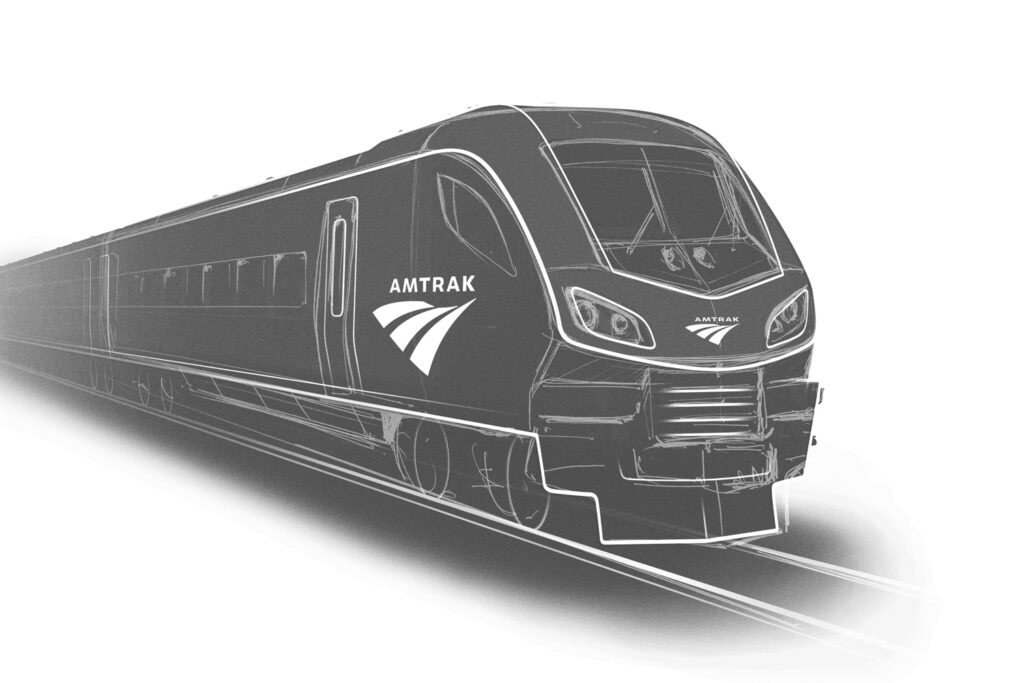All about the community of model railroading and rail enthusiasm
July 8, 2021
Siemens Mobility has been awarded $34 billion in contracts in the United States to design, manufacture and technically support 73 multi-powered trains for Amtrak, the company said this week. There is also a possibility for up to 140 additional trains and further maintenance agreements.
The order is Amtrak’s latest endeavor to acquire the most sustainable and efficient trains on the market, which include dual powered and hybrid battery vehicles.
The trains will operate across the Northeast Corridor and various state-supported routes, including those in Maine, Massachusetts, New York, North Carolina, Oregon, Vermont, Virginia, and Washington. With expanded capacity and the ability to shorten trip time, Amtrak expects the new trains will add over 1.5 million riders annually.
“These new trains will reshape the future of rail travel by replacing our aging 40-to-50-year old fleet with state-of-the-art, American-made equipment,” said Amtrak CEO Bill Flynn. “This investment is essential to preserving Northeast Regional and state-supported services for the future and will allow our customers to travel comfortably and safely, while reducing carbon emissions.”

Flynn said the trains will offer Amtrak and its passengers the latest in sustainable and intelligent rail technology. “We believe hybrid battery and dual powered trains will play an important role in reducing emissions and protecting the environment in the United States.”
Accompanying the manufacturing contract will be a long-term service agreement for technical support, spare parts and material supply. The trains include wireless communications, remote monitoring and fully integrated digital diagnostics for increased reliability. The advanced features will enable Amtrak to test and develop new technology and introduce new maintenance approaches to drive efficiency, increase availability and reduce long-term costs.
The order includes dual power and hybrid battery trains. The first will be delivered in 2024, while the first of its kind Venture Hybrid battery train will begin testing in 2025.
Trains for the Northeast Corridor and State Supported routes will be delivered from 2024 through 2030.
Through the use of multi-power systems, including hybrid battery operation, they will also provide a substantial environmental benefit through reduced emissions compared to the existing fleet.
The latest trains will feature more comfortable seating, individual power outlets and USB ports, onboard Wifi, enhanced lighting and panoramic windows, a more contemporary food service experience, including self-service options, as well as state-of-the-art customer trip information, digital seat reservation system and navigation display systems.
Trains are being designed with the latest health and safety standards, including enhanced HVAC, touchless restroom controls, and automated steps. In addition, they will be designed with Amtrak’s new standard of enhanced accessible features, including inductive hearing loops, accessible restrooms and vestibules, accessible Food Service car, and lifts for customers with reduced mobility, including wheelchair users. The trains meet all the latest safety regulations and standards, providing improved structural safety.
The trains will be manufactured at Siemens Mobility’s North American rail manufacturing facility in Sacramento, CA, and comply with the Federal Railroad Administration Buy America Standards. This year, the facility is celebrating its 30th anniversary of operations.
The plant is one of the largest of its kind on the continent, and one of the most sustainable, using a 2.1 MWp solar panel installation to generate much of its power from the California sun.
Siemens Mobility designs and manufactures across the entire spectrum of rolling stock including passenger trains, light rail and streetcars, locomotives, and passenger coaches in Sacramento. Customer services and maintenance will be managed out of the Siemens Mobility’s U.S. headquarters for maintenance and repair operations. The 60,000 square-foot McClellan Park plant is also in Sacramento.